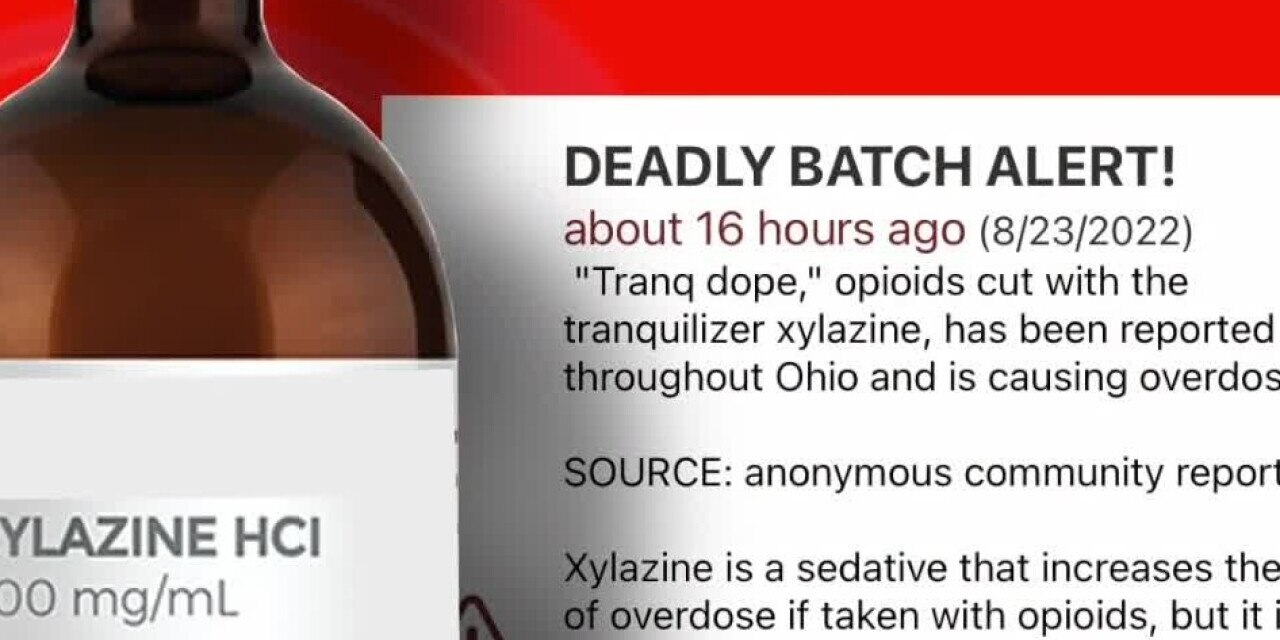Tranq, mentioned here briefly a few months back as an emerging drug of abuse, seems to be growing in popularity. A story from CNN, one of many in recent months:
Tranq has become a bigger part of Philly’s street fentanyl supply.
The name is just a street moniker for xylazine, a CNS depressant used by veterinarians to sedate large animals. That is its only approved use, but like so many other medicines, it found its way into the streets. Mostly in combination with fentanyl, but occasionally with other common substances, including cocaine and methamphetamine.
For the drug user, it’s a familiar dilemma: once they’ve developed a tolerance to opioids — even fentanyl, as powerful as that is– they must begin searching for something stronger, in hopes of recreating the pleasure, now gone, from the early days of drug use. Another depressant, such as xylazine, is one way to manage it, due to our old friend synergism. And like fentanyl, xylazine is relatively easy to make, and in combination with the opioid, significantly enhances its attractiveness to the user.
When we read about addicts rushing into the streets to locate some new drug, it often turns out to be some of the older stuff, made ‘new’ by the addition of other chemicals. People in a hurry to get high, or to temporarily relieve withdrawal, aren’t that picky. “I hear that shit’ll blow your socks off,” one user told a reporter, as if that explained it. Potency is everything, I guess.
Being a depressant, xylazine inhibits respiratory and cardiac function. Combined with fentanyl, that can easily result in coma, possibly a fatality. Second, since xylazine isn’t itself an opioid, the antagonist naloxone doesn’t reverse its effects. Even with prompt treatment, a user can still experience respiratory arrest, and death.
The FDA has just alerted Customs officers to look for and stop shipments of ingredients they suspect is intended for illicit manufacture of xylazine. Good for them, but it’s a bit late– plenty of the drug is already available inside our borders. And a little goes a long way.
As if that weren’t bad enough, xylazine seems to have a unique ability to disrupt circulatory function in a way that, according to a SAMHSA report, results in “…devastating effects on human tissue leading to painful open lesions, necrosis, and potentially limb loss.”
Gaak.
Once again, the FDA finds itself in the awkward position of needing to warn the public about the dangers of xylazine while making sure it’s available for veterinary use. That’s comparable to the medical need for opioids to treat acute and cancer pain, despite the many risks involved. If the past is any indicator, some of that medical xylazine will find its way to the street, for resale to drug users. That’s what happened with Oxycontin, isn’t it?
Intended for one use, co-opted to another.
It’s an old story, too often repeated.












